References:
[1]
Abrahamov, A., Mechoulam, R. (1995). An
efficient new cannabinoid antiemetic in pediatric oncology. Life Sciences, 56(23-24):2097-2102. Available from: http://www.cannabis-med.org/studies/ww_en_db_study_show.php?s_id=7
.
[2]
Ahmedzai, S., Carlyle, D.L., Calder, I.T.,
Moran, F. (1983). Anti-emetic efficacy and toxicity of nabilone, a synthetic
cannabinoid, in lung cancer chemotherapy. Br
J Cancer, 48(5):657-63. Available from: http://www.cannabis-med.org/studies/ww_en_db_study_show.php?s_id=119
.
[3]
Brisbois, T.D., de Kock, I.H., Watanabe, S.M.,
Mirhosseini, M., Lamoureux, D.C., Chasen, M., Macdonald, N., Baracos, V.E.,
Wismer, W.V. (2011). Delta-9-tetrahydrocannabinol may palliate altered
chemosensory perception in cancer patients: results of a randomized,
double-blind, placebo-controlled pilot trial. Ann Oncol., 22(9):2086-93. Available from: http://www.cannabis-med.org/studies/ww_en_db_study_show.php?s_id=304
[4]
Cancer (Fact Sheets). Updated February 2015.
Accessed on: 2016 June 1. Available from: http://www.who.int/mediacentre/factsheets/fs297/en/
.
[5]
Chang, A.E., Shiling, D.J., Stillman, R.C.,
Goldberg, N.H., Seipp, C.A., Barofsky, I., Rosenberg. (1981). A prospective
evaluation of delta-9-tetrahydrocannabinol as an antiemetic in patients
receiving adriamycin and cytoxan chemotherapy. Cancer, 47(7):1746-51. Available from: http://www.cannabis-med.org/studies/ww_en_db_study_show.php?s_id=22
.
[6]
Chang, A.E., Shiling, D.J., Stillman, R.C.,
Goldberg, N.H., Seipp, C.A., Barofsky, I., Simon, R.M., Rosenberg, S.A. (1979).
Delta-9-tetrahydrocannabinol as an antiemetic in cancer patients receiving
high-dose methotrexate. A prospective, randomized evaluation. Annals of Internal Medicine, 91:819-824.
Available from: http://www.cannabis-med.org/studies/ww_en_db_study_show.php?s_id=23
.
[7]
Chan, H.S., Correia, J.A., MacLeod, S.M. (1987).
Nabilone versus prochlorperazine for control of cancer chemotherapy-induced
emesis in children: a double-blind, crossover trial. Pediatrics, 79(6):946-52. Available from: http://www.cannabis-med.org/studies/ww_en_db_study_show.php?s_id=120
.
[8]
Citron, M.L., Herman, T.S., Vreeland, F.,
Krasnow, S.H., Fossieck, B.E. Jr, Harwood, S., Franklin, R., Cohen, M.H.
(1985). Antiemetic efficacy of levonantradol compared to
delta-9-tetrahydrocannabinol for chemotherapy-induced nausea and vomiting. Cancer Treat Rep., 69(1):109-12. Available
from: http://www.cannabis-med.org/studies/ww_en_db_study_show.php?s_id=152.
[9]
Côté, M., Trudel, M., Wang, C., Fortin, A.
(2015). Improving Quality of Life With Nabilone During Radiotherapy Treatments
for Head and Neck Cancers: A Randomized Double-Blind Placebo-Controlled Trial. Ann Otol Rhinol Laryngol, 125(4):317-24. doi: http://10.1177/0003489415612801.
[ PubMed PMID: 26503964].
[10]
Cunningham,
D., Bradley, C.J., Forrest, G.J., Hutcheon, A.W., Adams, L., Sneddon, M.,
Harding, M., Kerr, D.J., Soukop, M., Kaye, S.B. (1988). A randomized trial of
oral nabilone and prochlorperazine compared to intravenous metoclopramide and
dexamethasone in the treatment of nausea and vomiting induced by chemotherapy
regimens containing cisplatin or cisplatin analogues. Eur J Cancer Clin Oncol., 24(4):685-9. Available from: http://www.cannabis-med.org/studies/ww_en_db_study_show.php?s_id=122
.
[11]
Dalzell,
A.M., Bartlett, H., Lilleyman, J.S. (1986). Nabilone: an alternative antiemetic
for cancer chemotherapy. Arch Dis Child,
61(5):502-5. Available from:
http://www.cannabis-med.org/studies/ww_en_db_study_show.php?s_id=123
.
[12]
Duran,
M., Pérez, E., Abanades, S., Vidal, X., Saura, C., Majem, M., Arriola, E.,
Rabanal, M., Pastor, A., Farré, M., Rams, N., Laporte, J.R., Capellà, D.
(2010). Preliminary efficacy and safety of an oromucosal standardized cannabis
extract in chemotherapy-induced nausea and vomiting. Br J Clin Pharmacol., 70(5):656-63.
Available from:
http://www.cannabis-med.org/studies/ww_en_db_study_show.php?s_id=312
.
[13]
Einhorn,
L.H., Nagy, C., Furnas, B., Williams, S.D. (1981). Nabilone: an effective
antiemetic in patients receiving cancer chemotherapy. J Clin Pharmacol, 21(8-9 Suppl):64S-69S. Available from: http://www.cannabis-med.org/studies/ww_en_db_study_show.php?s_id=124
.
[14]
Engels,
F.K., de Jong, F.A., Sparreboom, A., Mathot, R.A., Loos, W.J., Kitzen, J.J., de
Bruijn, P., Verweij, J., Mathijssen, R.H. (2007). Medicinal cannabis does not
influence the clinical pharmacokinetics of irinotecan and docetaxel. Oncologist, 12(3):291-300. Available
from: http://www.cannabis-med.org/studies/ww_en_db_study_show.php?s_id=246
.
[15]
Epidemiology
of cannabis use, disorders and treatment. Updated February 2015. Accessed on:
2016 June 1. Available from:
http://www.who.int/substance_abuse/publications/cannabis_report/en/index5.html
.
[16]
Frytak,
S., Moertel, C.G., O'Fallon, J.R., Rubin, J., Creagan, E.T., O'Connell, M.J.,
Schutt, A.J., Schwartau, N.W. (1979). Delta-9-tetrahydrocannabinol as an
antiemetic for patients receiving cancer chemotherapy. A comparison with
prochlorperazine and a placebo. Annals of
Internal Medicine, 91(6):825-830. Available from:
http://www.cannabis-med.org/studies/ww_en_db_study_show.php?s_id=5
.
[17]
George,
M., Pejovic, M.H., Thuaire, M., Kramar, A., Wolff, J.P. (1983). Randomized comparative
trial of a new anti-emetic: nabilone, in cancer patients treated with
cisplatin. Biomed Pharmacother, 37(1):24-7.
Available from:
http://www.cannabis-med.org/studies/ww_en_db_study_show.php?s_id=125
.
[18]
Gonzalez-Rosales,
F., Walsh, D. (1997). Intractable nausea and vomiting due to gastrointestinal
mucosal metastases relieved by tetrahydrocannabinol (dronabinol). Journal of Pain and Symptom Management, 14(5):311-314.
Available from:
http://www.cannabis-med.org/studies/ww_en_db_study_show.php?s_id=35
.
[19]
Gottschling,
S. (2011). Cannabinoids in children. Applied
pain management and palliative care, 1:55-57. Available from: http://www.cannabis-med.org/studies/ww_en_db_study_show.php?s_id=295.
[20]
Guidelines
for the Psychosocially Assisted Pharmacological Treatment of Opioid Dependence.
(2009). Available from:
http://www.who.int/substance_abuse/publications/opioid_dependence_guidelines.pdf?ua=1
.
[21]
Guzman,
M., Duarte, M.J., Blazquez, C., Ravina, J., Rosa, M.C., Galve-Roperh, I.,
Sanchez, C., Velasco, G., Gonzalez-Feria, L. (2006). A pilot clinical study of
Delta(9)-tetrahydrocannabinol in patients with recurrent glioblastoma
multiforme. Br J Cancer, 95(2):197-203.
Available from: http://www.cannabis-med.org/studies/ww_en_db_study_show.php?s_id=193
.
[22]
Herman,
T.S., Einhorn, L.H., Jones, S.E., Nagy, C., Chester, A.B., Dean, J.C., Furnas,
B., Williams, S.D., Leigh, S.A., Dorr, R.T., Moon, T. E. (1979). Superiority of
nabilone over prochlorperazine as an antiemetic in patients receiving cancer
chemotherapy. N Engl J Med., 300(23):1295-7.
Available from:
http://www.cannabis-med.org/studies/ww_en_db_study_show.php?s_id=126
.
[23]
Hutcheon,
A.W., Palmer, J.B., Soukop, M., Cunningham, D., McArdle, C., Welsh, J., Stuart,
F., Sangster, G., Kaye, S., Charlton, D. (1983). A randomised multicentre
single blind comparison of a cannabinoid anti-emetic (levonantradol) with
chlorpromazine in patients receiving their first cytotoxic chemotherapy. European Journal for Cancer and Clinical
Oncology, 19(8):1087-90. Available from: http://www.cannabis-med.org/studies/ww_en_db_study_show.php?s_id=132
.
[24]
Jatoi,
A., Windschitl, H.E., Loprinzi, C.L., Sloan, J.A., Dakhil, S.R., Mailliard,
J.A., Pundaleeka, S., Kardinal, C.G., Fitch, T.R., Krook, J.E., Novotny, P.J.,
Christensen, B. (2002). Dronabinol versus megestrol acetate versus combination
therapy for cancer-associated anorexia: a North Central Cancer Treatment Group
study. Journal of Clinical Oncology, 20(2):567-573.
Available from: http://www.cannabis-med.org/studies/ww_en_db_study_show.php?s_id=49
.
[25]
Johansson,
R., Kilkku, P., Groenroos, M. (1982). A double-blind, controlled trial of
nabilone vs. prochlorperazine for refractory emesis induced by cancer
chemotherapy. Cancer Treat Rev., 9 Suppl
B: 25-33. Available from: http://www.cannabis-med.org/studies/ww_en_db_study_show.php?s_id=146
.
[26]
Johnson,
J.R., Burnell-Nugent, M., Lossignol, D., Ganae-Motan, E.D., Potts, R., Fallon,
M.T. (2010). Multicenter, Double-Blind, Randomized, Placebo-Controlled,
Parallel-Group Study of the Efficacy, Safety, and Tolerability of THC: CBD
Extract and THC Extract in Patients With Intractable Cancer-Related Pain. J Pain Symptom Manage, 39(2):167-79. Available from: http://www.cannabis-med.org/studies/ww_en_db_study_show.php?s_id=368
.
[27]
Johnson,
J.R., Lossignol, D., Burnell-Nugent, M., Fallon, M.T. (2013). An open-label
extension study to investigate the long-term safety and tolerability of THC/CBD
oromucosal spray and oromucosal THC spray in patients with terminal
cancer-related pain refractory to strong opioid analgesics. J Pain Symptom Manage, 46(2):207-18. doi: http://10.1016/j. [PubMed PMID: 23141881].
[28]
Jones,
S.E., Durant, J.R., Greco, F.A., Robertone, A. (1982). A multi-institutional
Phase III study of nabilone vs. placebo in chemotherapy-induced nausea and vomiting. Cancer Treat Rev., 9 Suppl B: 45-8.
Available from: http://www.cannabis-med.org/studies/ww_en_db_study_show.php?s_id=156
.
[29]
Lane, M.,
Vogel, C.L., Ferguson, J., Krasnow, S., Saiers, J.L., Hamm, J. (1991).
Dronabinol and prochlorperazine in combination for treatment of cancer
chemotherapy-induced nausea and vomiting. Journal
of Pain and Symptom Management,6:352-359. Available from: http://www.cannabis-med.org/studies/ww_en_db_study_show.php?s_id=28
.
[30]
Levitt,
M., Faiman, C., Hawks, R., Wilson, A. (1984). Randomized double blind
comparison of delta-9-tetrahydroicannabinol (THC) and marijuana as chemotherapy
antiemetics. Proceedings of the American
Society for Clinical Oncology,3:91. Available from: http://www.cannabis-med.org/studies/ww_en_db_study_show.php?s_id=29
.
[31]
Lynch,
M.E., Cesar-Rittenberg, P., Hohmann, A.G. (2014). A double-blind,
placebo-controlled, crossover pilot trial with extension using an oral mucosal
cannabinoid extract for treatment of chemotherapy-induced neuropathic pain. J Pain Symptom Manage, 47(1):166-73. doi: http://10.1016/j. [PubMed PMID: 23742737].
[32]
Madras,
B.K. (2015). Update of Cannabis and its medical use. 37th ECDD (2015) Agenda item 6.2, available from:
http://www.who.int/medicines/access/controlled-substances/6_2_cannabis_update.pdf?ua=1&ua=1
.
[33]
Maida,
V., Ennis, M., Irani, S., Corbo, M., Dolzhykov, M. (2008). Adjunctive nabilone
in cancer pain and symptom management: a prospective observational study using
propensity scoring. J Support Oncol., 6(3):119-24.
Available from:
http://www.cannabis-med.org/studies/ww_en_db_study_show.php?s_id=176
.
[34]
Maida, V.
(2008). Nabilone for the treatment of paraneoplastic night sweats: a report of
four cases. J Palliat Med., 11(6):929-34.
Available from:
http://www.cannabis-med.org/studies/ww_en_db_study_show.php?s_id=282
.
[35]
Maida, V.
(2006). The synthetic cannabinoid nabilone improves pain and symptom management
in cancer patients. Abstract presented at
the San Antonio Breast Cancer Symposium on 15 December 2006, Available
from: http://www.cannabis-med.org/studies/ww_en_db_study_show.php?s_id=177
.
[36]
McCabe,
M., Smith, F.P., Goldberg, D., Macdonald, J., Woolley, P.V., Warren, R. (1988).
Efficacy of tetrahydrocannabinol in patients refractory to standard anti-emetic
therapy. Investigational New Drugs, 6:243-246. Available from:
http://www.cannabis-med.org/studies/ww_en_db_study_show.php?s_id=31
.
[37]
Meiri,
E., Jhangiani, H., Vredenburgh, J.J., Barbato, L.M., Carter, F.J., Yang, H.M.,
Baranowski, V. (2007). Efficacy of dronabinol alone and in combination with
ondansetron versus ondansetron alone for delayed chemotherapy-induced nausea
and vomiting. Curr Med Res Opin, 23(3):533-43.
Available from: http://www.cannabis-med.org/studies/ww_en_db_study_show.php?s_id=191
.
[38]
Musty, R.E.,
Rossi, R. (2001). Effects of smoked cannabis and oral
delta-9-tetrahydrocannabinol on nausea and emesis after cancer chemotherapy: A
review of state clinical trials. J
Cannabis Ther, 1(1):29-42. Available from:
http://www.cannabis-med.org/studies/ww_en_db_study_show.php?s_id=256
.
[39]
Neidhart,
J.A., Gagen, M.M., Wilson, H.E., Young, D.C. (1981). Comparative trial of the
antiemetic effects of THC and haloperidol. International
Journal of Clinical Pharmacology Research, 21: 38-42S. Available from:
http://www.cannabis-med.org/studies/ww_en_db_study_show.php?s_id=64
.
[40]
Nelson,
K., Walsh, D., Deeter, P., Sheehan, F. (1994). A phase II study of
delta-9-tetrahydrocannabinol for appetite stimulation in cancer-associated
anorexia. Journal of Palliative Care, 10(1):14-18.
Available from:
http://www.cannabis-med.org/studies/ww_en_db_study_show.php?s_id=52
.
[41]
Niederle,
N., Schutte, J., Schmidt, C.G. (1986). Crossover comparison of the antiemetic
efficacy of nabilone and alizapride in patients with nonseminomatous testicular
cancer receiving cisplatin therapy. Klin
Wochenschr, 64(8):362-5. Available from:
http://www.cannabis-med.org/studies/ww_en_db_study_show.php?s_id=127
.
[42]
Niiranen,
A., Mattson, K. (1985). A cross-over comparison of nabilone and
prochlorperazine for emesis induced by cancer chemotherapy. Amerícan Journal of Clinical Oncology, 8(4):336-40.
Available from: http://www.cannabis-med.org/studies/ww_en_db_study_show.php?s_id=128
.
[43]
Noyes, R.
Jr, Brunk, S.F., Avery, D.A.H., Canter, A. C. (1975). The analgesic properties
of delta-9-tetrahydrocannabinol and codeine. Clinical Pharmacology and Therapeutics, 18(1):84-89. Available
from: http://www.cannabis-med.org/studies/ww_en_db_study_show.php?s_id=17
.
[44]
Noyes, R.
Jr, Brunk, S.F., Baram, D.A., Canter, A. (1975). Analgesic effect of
delta-9-tetrahydrocannabinol. Journal of
Clinical Pharmacology, 15(2-3):139-143. Available from: http://www.cannabis-med.org/studies/ww_en_db_study_show.php?s_id=16
.
[45]
Orr,
L.E., McKernan, J.F., Bloome, B. (1980). Antiemetic effect of
tetrahydrocannabinol. Compared with placebo and prochlorperazine in
chemotherapy-associated nausea and emesis.
Annals of Internal Medicine, 140(11):1431-1433. Available from:
http://www.cannabis-med.org/studies/ww_en_db_study_show.php?s_id=6
.
[46]
Pomeroy,
M., Fennelly, J.J., Towers, M. (1986). Prospective randomized double-blind
trial of nabilone versus domperidone in the treatment of cytotoxic-induced
emesis. Cancer Chemother Pharmacol, 17(3):285-8.
Available from:
http://www.cannabis-med.org/studies/ww_en_db_study_show.php?s_id=129
.
[47]
Portenoy,
R.K., Ganae-Motan, E.D., Allende, S., Yanagihara, R., Shaiova, L., Weinstein,
S., McQuade, R., Wright, S., Fallon, M.T. (2012). Nabiximols for opioid-treated
cancer patients with poorly-controlled chronic pain: a randomized,
placebo-controlled, graded-dose trial. J Pain, 13(5):438-49. Available from: http://www.cannabis-med.org/studies/ww_en_db_study_show.php?s_id=491 .
[48]
Priestman,
T.J., Priestman, S.G. (1984). An initial evaluation of Nabilone in the control
of radiotherapy-induced nausea and vomiting. Clin Radiol., 35(4):265-6. Available from: http://www.cannabis-med.org/studies/ww_en_db_study_show.php?s_id=237
.
[49]
Sallan,
S.E., Cronin, C., Zelen, M., Zinberg, N.E. (1980). Antiemetics in patients
receiving chemotherapy for cancer: a randomized comparison of
delta-9-tetrahydrocannabinol and prochlorperazine. New England Journal of Medicine, 302(3):135-138. Available from: http://www.cannabis-med.org/studies/ww_en_db_study_show.php?s_id=3
.
[50]
Sallan,
S.E., Zinberg, N.E., Frei, E. (1975). Antiemetic effect of
delta-9-tetrahydrocannabinol in patients receiving cancer chemotherapy. New England Journal of Medicine, 293(16):795-797.
Available from: http://www.cannabis-med.org/studies/ww_en_db_study_show.php?s_id=4
.
[51]
Steele,
N., Gralla, R.J., Braun, D.W. Jr, Young, C.W. (1980). Double-blind comparison
of the antiemetic effects of nabilone and prochlorperazine on
chemotherapy-induced emesis. Cancer
Treatment Report, 64(2-3):219-24. Available from:
http://www.cannabis-med.org/studies/ww_en_db_study_show.php?s_id=131
.
[52]
Strasser,
F., Luftner, D., Possinger, K., Ernst, G., Ruhstaller, T., Meissner, W., Ko,
Y.D., Schnelle, M., Reif, M., Cerny, T. (2006). Comparison of orally
administered cannabis extract and delta-9-tetrahydrocannabinol in treating
patients with cancer-related anorexia-cachexia syndrome: a multicenter, phase
III, randomized, double-blind, placebo-controlled clinical trial from the
Cannabis-in-Cachexia-Study-Group. J Clin
Oncol, 24(21):3394-400. Available from: http://www.cannabis-med.org/studies/ww_en_db_study_show.php?s_id=195
.
[53]
Ungerleider,
J.T., Andrysiak, T., Fairbanks, L., Goodnight, J., Sarna, G., Jamison, K.
(1982). Cannabis and cancer chemotherapy: a comparison of oral delta-9-THC and
prochlorperazine. Cancer, 50:636-645.
Available from:
http://www.cannabis-med.org/studies/ww_en_db_study_show.php?s_id=65
.
[54]
Ungerleider
JT, Sarna G, Fairbanks LA, Goodnight J, Andrysiak T, Jamison K. (1985). THC or
Compazine for the cancer chemotherapy patient--the UCLA study. Part II: Patient
drug preference. American Journal of
Clinical Oncology, 8: 142-147. Available from: http://www.cannabis-med.org/studies/ww_en_db_study_show.php?s_id=34
.
[55]
Vinciguerra,
V., Moore, T., Brennan E. (1988). Inhalation marijuana as an antiemetic for
cancer chemotherapy. New York State
Journal of Medicine, 88:525-527.
Available from: http://www.cannabis-med.org/studies/ww_en_db_study_show.php?s_id=155
.
[56]
Wadleigh,
R., Spaulding, G.M., Lumbersky, B., Zimmer, M., Shepard, K., Plasse, T. (1990).
Dronabinol enhancement of appetite in cancer patients. Proc Am Soc Oncology, 9: 331. Available from: http://www.cannabis-med.org/studies/ww_en_db_study_show.php?s_id=149
.
[57]
Waissengrin,
B., Urban, D., Leshem, Y., Garty, M., Wolf, I. (2015). Patterns of use of
medical cannabis among Israeli cancer patients: a single institution
experience. J Pain Symptom Manage, 49(2):223-30. doi: http://10.1016/j. [PubMed PMID: 24937161].
[58]
Zutt, M.,
Hanssle, H., Emmert, S., Neumann, C., Kretschmer, L. (2006). Dronabinol for
supportive therapy in patients with malignant melanoma and liver metastases. Hautarzt, 57(5):423-7. Available from: http://www.cannabis-med.org/studies/ww_en_db_study_show.php?s_id=180
.
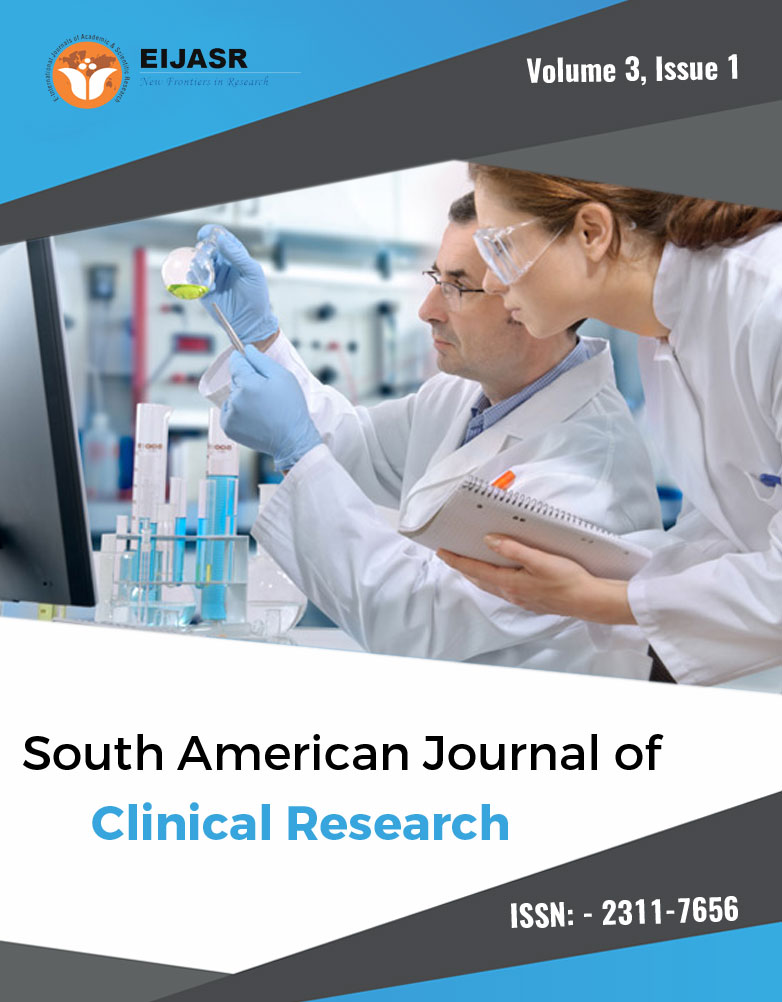
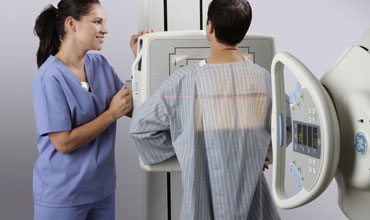 Intravascular Contrast Media in Radiography: Historical Development & Review of Risk Factors for Adverse ReactionsAuthor: Abonyi Livinus ChibuzoDOI: 10.21522/TIJCR.2014.03.01.Art001
Intravascular Contrast Media in Radiography: Historical Development & Review of Risk Factors for Adverse ReactionsAuthor: Abonyi Livinus ChibuzoDOI: 10.21522/TIJCR.2014.03.01.Art001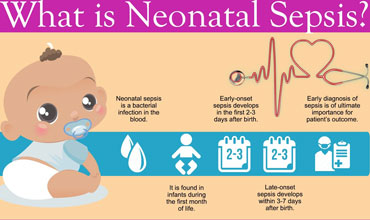 An Observational Prospective Study of the Management of Neonatal Sepsis in the Pediatric Wards of Korle-Bu Teaching HospitalAuthor: Ekpale PDOI: 10.21522/TIJCR.2014.03.01.Art002
An Observational Prospective Study of the Management of Neonatal Sepsis in the Pediatric Wards of Korle-Bu Teaching HospitalAuthor: Ekpale PDOI: 10.21522/TIJCR.2014.03.01.Art002 Bilateral Cavernous Sinus Thrombophlebitis Caused by MRSA – A Rare Clinical EntityAuthor: Vaishali SangoleDOI: 10.21522/TIJCR.2014.03.01.Art004
Bilateral Cavernous Sinus Thrombophlebitis Caused by MRSA – A Rare Clinical EntityAuthor: Vaishali SangoleDOI: 10.21522/TIJCR.2014.03.01.Art004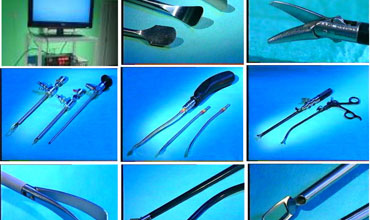 Clinical Evaluation vs Endoscopic Findings in Laryngomalacia at a Tertiary Institution in Northern NigeriaAuthor: Muhammad Ghazali HasheemDOI: 10.21522/TIJCR.2014.03.01.Art005
Clinical Evaluation vs Endoscopic Findings in Laryngomalacia at a Tertiary Institution in Northern NigeriaAuthor: Muhammad Ghazali HasheemDOI: 10.21522/TIJCR.2014.03.01.Art005 Feasibility Analysis: The First Crucial Phase of Startup in Clinical ResearchAuthor: Vinod GyanchandaniDOI: 10.21522/TIJCR.2014.03.01.Art006
Feasibility Analysis: The First Crucial Phase of Startup in Clinical ResearchAuthor: Vinod GyanchandaniDOI: 10.21522/TIJCR.2014.03.01.Art006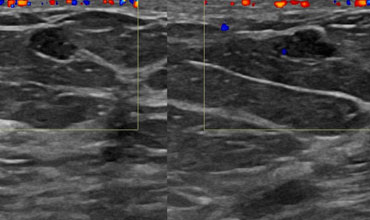 Carcinoma Right Breast (post-operative Chemotherapy and Radiotherapy) with bone and lung metastases: A Case Report and Review of LiteratureAuthor: Kavita GuptaDOI: 10.21522/TIJCR.2014.03.01.Art007
Carcinoma Right Breast (post-operative Chemotherapy and Radiotherapy) with bone and lung metastases: A Case Report and Review of LiteratureAuthor: Kavita GuptaDOI: 10.21522/TIJCR.2014.03.01.Art007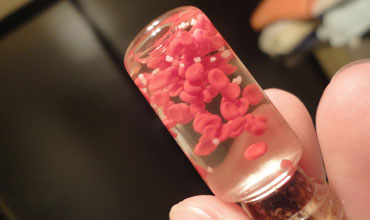 Literature review of Management and Quality of Life of Idiopathic Thrombocytopenic Purpura (ITP) patientsAuthor: Kavita GuptaDOI: 10.21522/TIJCR.2014.03.01.Art008
Literature review of Management and Quality of Life of Idiopathic Thrombocytopenic Purpura (ITP) patientsAuthor: Kavita GuptaDOI: 10.21522/TIJCR.2014.03.01.Art008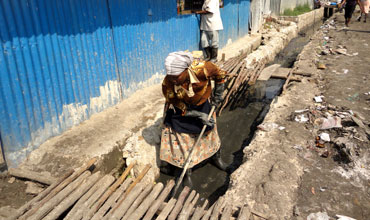 Malaria control: Knowledge and Practice among Over-the-Counter Medicine Sellers in the Pru, Sene and Atebubu-Amantin Districts, Brong Ahafo Region, GhanaAuthor: Mensah S.J.ADOI: 10.21522/TIJCR.2014.03.01.Art009
Malaria control: Knowledge and Practice among Over-the-Counter Medicine Sellers in the Pru, Sene and Atebubu-Amantin Districts, Brong Ahafo Region, GhanaAuthor: Mensah S.J.ADOI: 10.21522/TIJCR.2014.03.01.Art009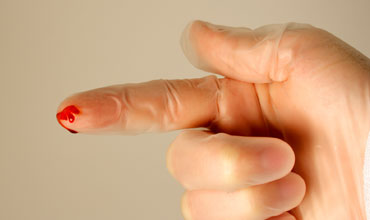 Knowledge, attitude and practice towards needle stick injury among health care workers in a tertiary Sudanese hospitalAuthor: Mohamed D. DafaallaDOI: 10.21522/TIJCR.2014.03.01.Art010
Knowledge, attitude and practice towards needle stick injury among health care workers in a tertiary Sudanese hospitalAuthor: Mohamed D. DafaallaDOI: 10.21522/TIJCR.2014.03.01.Art010 Phytocannabis for the treatment of cancer-related or cancer treatment related symptoms: Evidence Based ReviewAuthor: Kavita GuptaDOI: 10.21522/TIJCR.2014.03.01.Art011
Phytocannabis for the treatment of cancer-related or cancer treatment related symptoms: Evidence Based ReviewAuthor: Kavita GuptaDOI: 10.21522/TIJCR.2014.03.01.Art011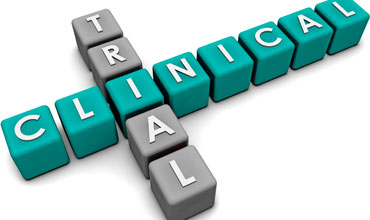 Design and regulation of clinical trials; from the laboratory to the pharmacyAuthor: Young E EDOI: 10.21522/TIJCR.2014.03.01.Art012
Design and regulation of clinical trials; from the laboratory to the pharmacyAuthor: Young E EDOI: 10.21522/TIJCR.2014.03.01.Art012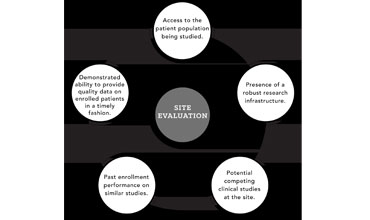 Site Evaluation: The Second Crucial Phase of Startup in Clinical ResearchAuthor: Vinod GyanchandaniDOI: 10.21522/TIJCR.2014.03.01.Art013
Site Evaluation: The Second Crucial Phase of Startup in Clinical ResearchAuthor: Vinod GyanchandaniDOI: 10.21522/TIJCR.2014.03.01.Art013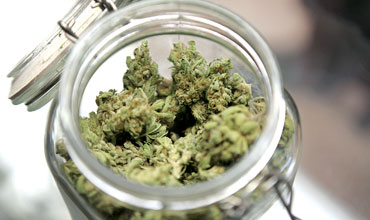 Use of Medical Cannabis and its derivatives for the anticonvulsant property in Epileptic patients along with Ethical considerations: a ReviewAuthor: Kavita GuptaDOI: 10.21522/TIJCR.2014.03.01.Art014
Use of Medical Cannabis and its derivatives for the anticonvulsant property in Epileptic patients along with Ethical considerations: a ReviewAuthor: Kavita GuptaDOI: 10.21522/TIJCR.2014.03.01.Art014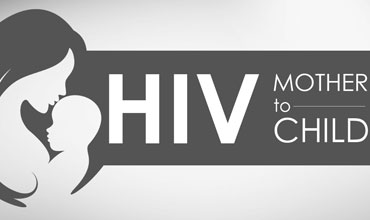 Impact of Repeated Prevention of Mother to Child Transmission of HIV (PMTCT) Services on Vertical Transmission of HIV Infection in Southwest NigeriaAuthor: Abayomi Joseph AfeDOI: 10.21522/TIJCR.2014.03.01.Art015
Impact of Repeated Prevention of Mother to Child Transmission of HIV (PMTCT) Services on Vertical Transmission of HIV Infection in Southwest NigeriaAuthor: Abayomi Joseph AfeDOI: 10.21522/TIJCR.2014.03.01.Art015
